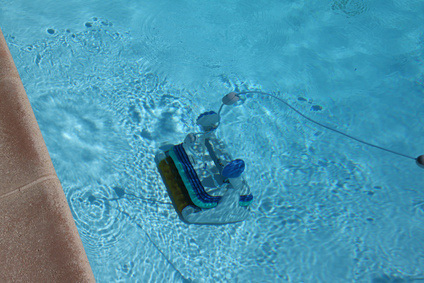So you think you may have iron in your pool water? Before you rush out and try to remove the iron from your pool water you need to do some investigation.
The first thing to do is confirm that what you think is iron is in fact iron. There are two symptoms that result from having iron in pool water:
- the first is discolored water and
- the second is brown staining
They both require different but very related techniques to treat.
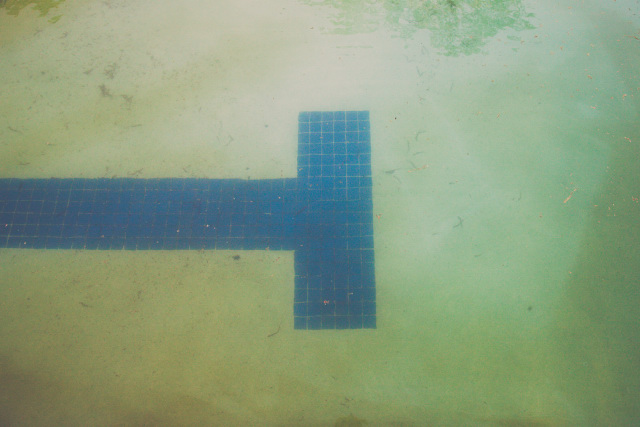
Sometimes visible dark spots on pool walls or floors are mistaken for iron when they are actually something else.
And likewise, brown-colored or orange-tinted water can be mistaken for iron. That’s why it’s key to test for iron prior to treating your pool or you could be wasting your time and money.
Article Contents
How Do You Know If You Have Iron in the Water?
If you suspect you have discolored water-related to iron content then the first step to take is to confirm by having your water tested for iron content. The easiest and quickest way is to have it tested at the pool store if you have one conveniently located to you.
Or you can use a metal test kit like this:
- Tests 17 parameters (for drinking, well & pool water)
- Get your results quickly and easily
- Complete test for bacteria, metals, chlorine, minerals
What Do Iron and Rust Stains Look Like?
Perhaps you’re still not sure if you have iron in your pool water. Here’s a few example images of swimming pools with rust stains and iron in the water.
If you do have rust stains, then you’ll probably want to know how to remove the iron stain from your pool walls or floor: How to Remove Iron (Rust) Stains from a Pool
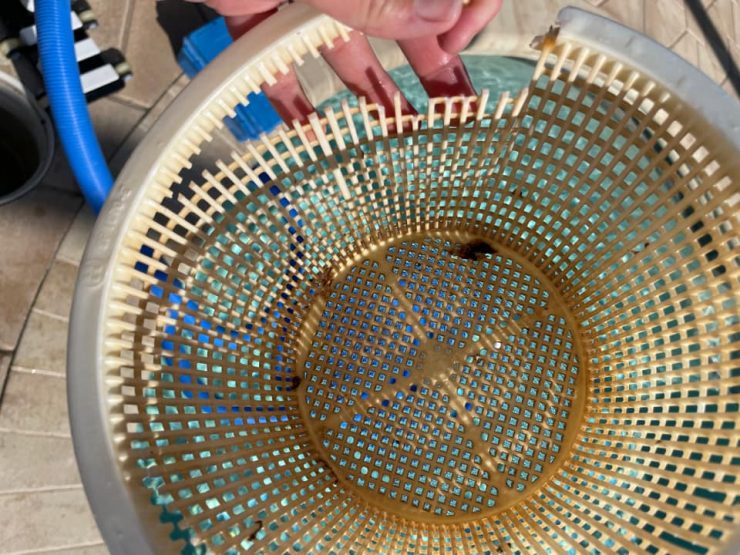
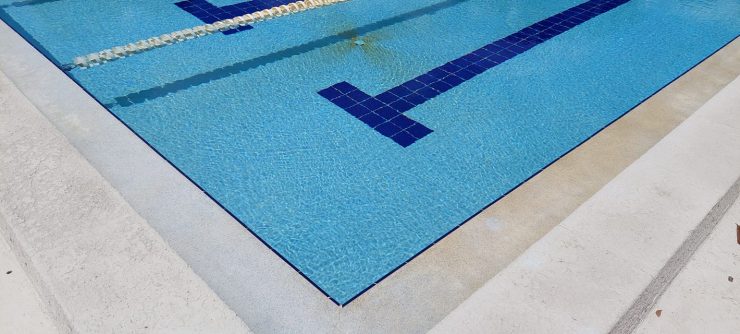
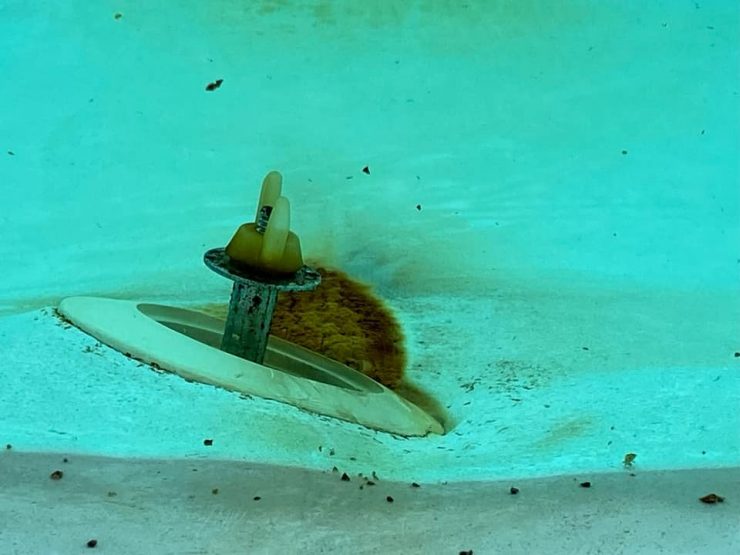
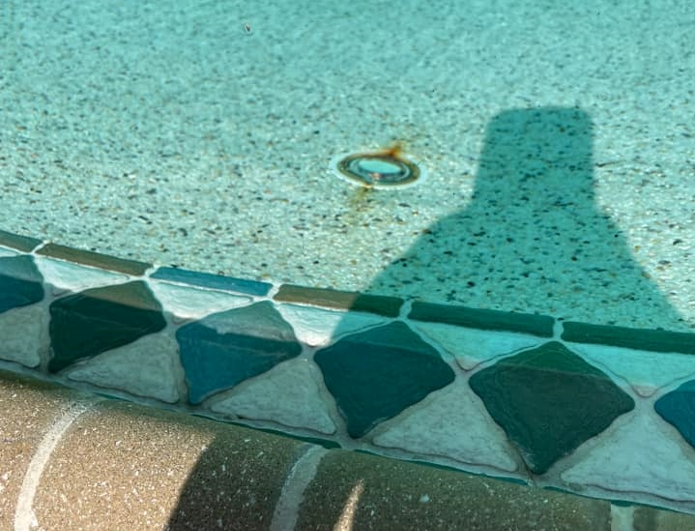
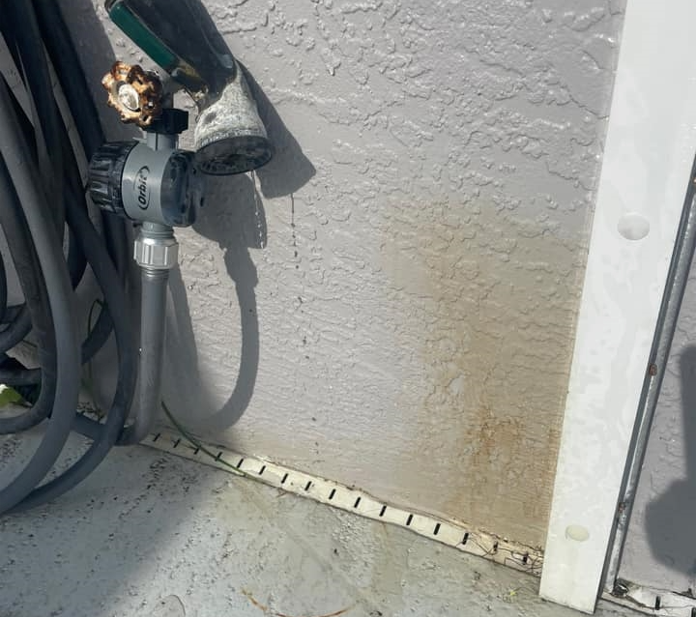
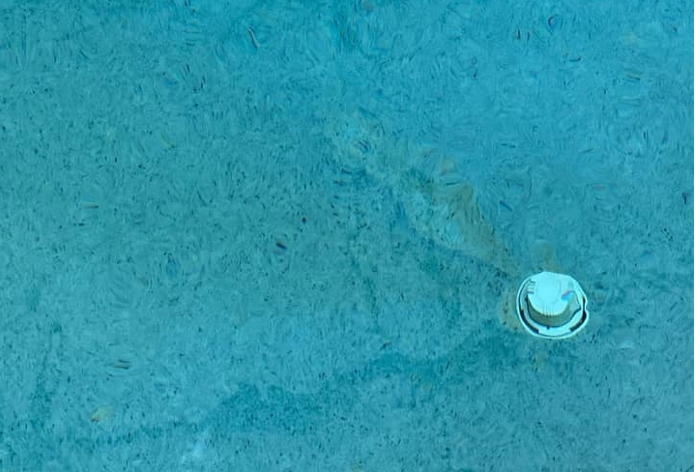
Why is There Iron in My Pool Water?
Before we start with how to remove iron, it’s important to understand where the iron came from in the first place.
- Well water
- Physical features
- Fertilizer
- Pool salt
Iron can be introduced through the use of well water to fill your pool.

Or from physical features such as marble, flagstone, and granite that can leach iron when it rains. Another interesting way iron is introduced is through lawn fertilizer and some brands of salt used in saltwater pools.

Take the time to find the source of your iron and correct the problem at the source so that you only have to remove the iron once!
How to Remove Iron from Pool Water
Once you have confirmed that you have iron in your water, there are actually several ways to remove it, and each has its own pros and cons.
When treating for metals it’s important to understand the difference between removing the metal and simply containing or suspending it in solution, and we will cover that in each method.
Pool stores sell metal removal products that you can add to your water that basically bind with the iron ions and keep them from being oxidized or precipitating out into stains. They are typically called Metal Out, Metal Free, or some variation of Metal Remover and are branded by various manufacturers.
Here’s a table that summarizes the different ways to remove iron from your pool water.
| Iron Treatment Method | Removes Metal from Water | How it Works | Best For |
| Sequestering Agents | No | Holds particles in suspension. | Preventing further stains and oxidization of metals. Do not remove metal. |
| Chelating Agents | No | Holds particles in suspension. | Preventing further stains and oxidization of metals. Do not remove metal. |
| Total Removal – CuLator | Yes | Is a small back that contains proprietary chemicals to grab metals and keep inside bags. | Permanent metal removal |
| Dilution With Fresh Water | Yes | Removes through partial draining and refilling with iron-free water. | Permanent metal removal |
| Iron Filtration | Yes | Hose or external filter to capture and remove iron from fill water or existing pool water. | Removing iron before it gets in water or removing iron from existing water. |
| Flocculant | Yes | Makes iron fall to the pool bottom ready for vacuuming out. | Permanent metal removal |
Iron Removal Method 1: Sequestering Agents
Best for: Temporary removal and best for fresh fills
A sequestering agent works by holding the iron ions in suspension by binding them into clumps and preventing them from reacting with oxidizing agents such as water, chlorine, and oxygen.
Sequestering agents are effective at protecting your pool and water from discoloration as long as the level of the agent is kept constant in the water with recurring weekly treatments.
Steps for using sequestering agents:
- Add the amount of agent as directed by the manufacturer’s instructions. The product is typically added to the skimmer or poured around the edge of the pool.
- Run your pump for 24 hours to thoroughly mix the agent with your water.
- Add a maintenance dose weekly, or as directed by manufacturer instructions.
- Stops discoloration from iron, calcium, copper & other metals/minerals
- Effectively protects against rust, stains & scale
- For pools & spas
Iron Removal Method 2: Chelating Agents
Best for: Temporary removal and best for fresh fills
Similar to sequestering agents, chelating agents are a temporary fix and will require weekly maintenance doses. They work by holding the ions in solution and preventing them from being oxidized, very similar to how sequestering agents work.
Steps for using chelating agents:
- Add the amount of agent as directed by the manufacturer’s instructions. The product is typically added to the skimmer or poured around the edge of the pool.
- Run your pump for 24 hours to thoroughly mix the agent with your water.
- Add a maintenance dose weekly, or as directed by manufacturer instructions.
Iron Removal Method 3 – Total Removal of Iron Ions
Best for: Used as a Follow On or replacement for Sequestering and Chelating treatments.
This method is the best way to completely remove the metal ions from your water and avoid having to use weekly doses of sequestering or chelating agents.
As the ions are released from the agents they can be captured and bound to the CuLator packet and once the packet is full it can be disposed of.
Steps for using CuLator:
- Add the appropriate number of pouches to your skimmer(s) according to your pool volume.
- If you want faster results, run your pump for longer periods to continue circulating the water and ions through the pouches.
- You will see the pouches change colors as they absorb the metals. They typically last 30 days. If you have higher amounts of metal you are removing, you may need to replace it before 30 days.
- Test your water to confirm that the iron is 0.2 pp or less.
- If you have fill water from a well, consider keeping a CuLator in your skimmer to continue filtering the iron out.
- Removes copper, iron, manganese, cobalt, nickel & silver
- Works for pool & spa water
- Traps metals in the bag & takes them out of the water
Iron Removal Method 4 – Dilution with Fresh Water
Best for: Best for fresh fills or higher level iron concentrations.
This method works well, but it’s a bit cumbersome and can be expensive depending on how much water costs in your area.
It works just as you would expect, it dilutes the iron in your pool and reduces the overall concentration. This is best used if the iron was introduced by well water and you do not have an easy source of iron-free water.
Steps for diluting:
- Drain some water from the pool and replace it with fresh water from either local water delivery or another source of freshwater.
- Circulate the water for at least eight hours and test again to determine the new concentration and if needed dilute again.
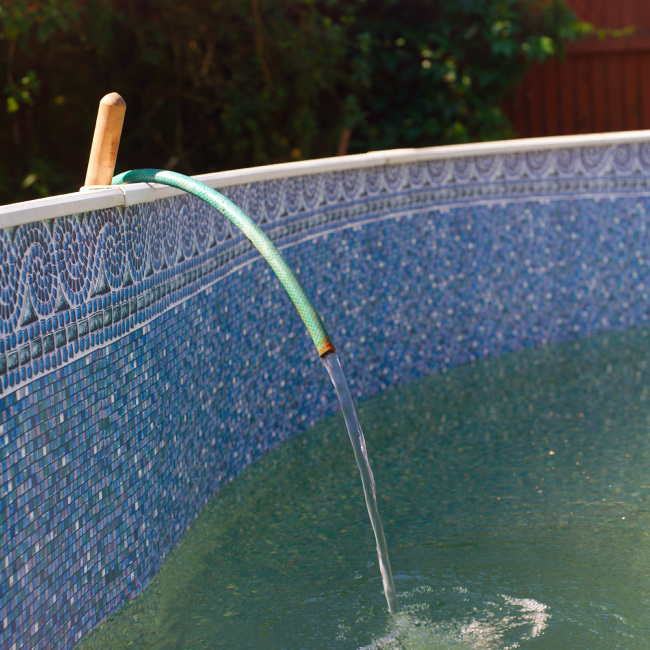
Iron Removal Method 5 – Filtration
Best for: Fresh fills or fill water that contains smaller amounts of iron.
This method works well and will completely remove the iron content if the correct filter is used and maintained.
If your fill water has iron in it, then a filter on your fill line can help you keep the iron out. Likewise, if you already have iron in your pool water then you can also use an external filter to cycle the water and remove the iron.
Steps for using filters:
- Attach a filter to your fill line and test fill water to confirm the filter is actually reducing the iron content.
- Replace the filter periodically according to the manufacturer’s instructions and test periodically to determine if the filter needs to be replaced.
Iron Removal Method 6 – Addition of flocculant
Best for: Fresh fills or fills water that contains a large concentration of iron.
Pools that have DE filters or sand filters can benefit from using flocculant (floc) to bind to the iron and make it fall to the bottom of the pool. This method can not be used for pools that have cartridge filters as the floc will damage the cartridges. You can try this kind of flocculant:
- Clears up cloudy pool water
- Drops dirt and algae to pool floor for vacuuming
- Removes phosphates which feed algae
Steps for using floc:
- Backwash filter prior to adding floc.
- Raise the water level as you will be removing a lot of water later.
- Add the floc according to manufacturer instructions (typically pour around the perimeter of the pool.)
- Leave the pump running for about 5 hours to circulate well.
- Turn the pump off and leave overnight to allow the floc to bind with the iron and force it to the bottom of the pool.
- Vacuum the pool to remove the bed of deposits on the bottom and restart the pump to let the filter remove the rest. Be sure you are vacuuming to waste to expel the iron.
- Backwash well and test again to make sure that the iron has been removed.
